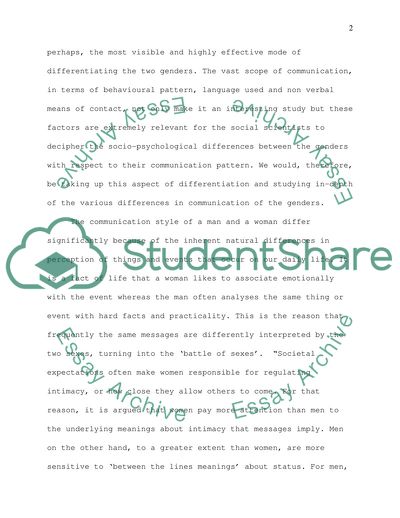Cite this document
(The Differences in Modes of Gender Communication Essay, n.d.)
The Differences in Modes of Gender Communication Essay. Retrieved from https://studentshare.org/gender-sexual-studies/1710353-gender-differences-in-communication
The Differences in Modes of Gender Communication Essay. Retrieved from https://studentshare.org/gender-sexual-studies/1710353-gender-differences-in-communication
(The Differences in Modes of Gender Communication Essay)
The Differences in Modes of Gender Communication Essay. https://studentshare.org/gender-sexual-studies/1710353-gender-differences-in-communication.
The Differences in Modes of Gender Communication Essay. https://studentshare.org/gender-sexual-studies/1710353-gender-differences-in-communication.
“The Differences in Modes of Gender Communication Essay”. https://studentshare.org/gender-sexual-studies/1710353-gender-differences-in-communication.


